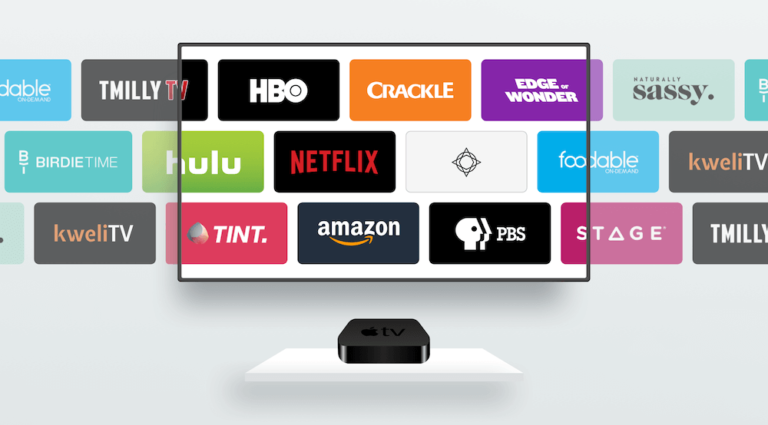India’s over-the-top streaming (OTT) market remains one of the fastest-growing markets in the world. Over the past twelve months, spurred on by the Covid-19-induced lockdown, total domestic OTT consumption increased from 181 billion minutes to 204 billion minutes.At present, India is the world’s fastest-growing OTT market. According to Boston Consulting Group( BCG), it is estimated to be worth $5 billion by 2023.

However, before OTT Platforms all movies were played in theaters. Which is actually expensive than watching on OTT Platforms at home, provided every one or anyone can access the top-quality content once paid for the subscription. There are thousands of programs you can access with a monthly subscription. Freedom to access international web series, shows, live sports telecasts, and favorite flicks on the go is one of the greatest pros of streaming platforms.

Also, there are no monthly bills for cable operators or interruption to face. Anyone willing to watch online digital content can register themselves and pay a monthly or yearly subscription amount, making it cost-effective. Whereas watching a movie at the theatre is expensive we should even travel. OTT platforms give you enough freedom to watch your favorite content wherever you want, however you want, and whenever you want. If you don’t have time to log on to your laptop or desktop, you can binge-watch it on your smartphone.


These media services can easily be accessed through mobile phones, laptops, smart TV, and other audio-visual devices with an internet connection. This service is synonymous with video-on-demand (SVoD) services, and digital content at the International level can be accessed. However, we won’t have many choices at theatres. OTT Platforms changed the way we consume entertainment in a better way. This Digital divide has made out lives easier. This wasn’t possible about a decade ago.

BENIFITS OF OTT :

OTT platforms are very easy to use and require only a few things like a stable internet connection, a viewing device like a smart TV or a smartphone etc. The network carrier provides the internet connectivity against a monthly payment and the viewer has the flexibility to choose an internet package or plan based on his requirements.
This huge spike in popularity is also because of the various benefits OTT services offer like:
Connectivity :

OTT platforms are very easy to use and require only a few things like a stable internet connection, a viewing device like a smart TV or a smartphone etc. The network carrier provides the internet connectivity against a monthly payment and the viewer has the flexibility to choose an internet package or plan based on his requirements.
Cost-friendly :

One internet many uses. The internet is used in several different ways like working from home, live video streaming, online classes, watching movies, accessing social media websites etc. But the internet usage charges are independent of the network carrier chosen or the content that is being accessed. The total cost of OTT usage is based on the internet data package chosen and the subscription fees, if any, for the OTT platforms being watched. In comparison to the traditional TV cable network charges, the charges are, thus, relatively lower.
Convenience :

Since the internet can be accessed from anywhere, at any time and from any device, accessing content on OTT platforms becomes easy. In contrast, traditional Cable networks are bound by physical and geographical boundaries. This freedom of location of OTT services makes it very convenient for viewers to watch their favourite content.
Varied content :

Traditionally cable networks are restrictive in the content that they show. This content usually involves serials, news, live games, movies, kids content etc. Thus the viewer is faced with limitations in channel selection, type, quality and variety of content. OTT platforms offer a wide variety of content, most of which offer free content as well as paid content. Subscriptions enable viewers to become prime members but even without subscribing to OTT platforms, a viewer can watch varied almost unlimited content.
Device independent viewing :

This is perhaps the biggest advantage of OTT platforms. It can be watched on any device irrespective of the network carrier. Additionally, the ability to watch or upload videos even through smartphones makes it possible to enable live video streaming from anywhere and anytime.
Additionally OTT is not used for only streaming or watching content. It can also be used to advertise and market products and services. The OTT offers several advantages in this aspect like:
Data transparency :

Metrics used to measure traditional TV consumption is based on extrapolating interpreted data. OTT advertisements offer greater transparency in content consumption. What a consumer watches, for how much time he watches the same, when is he watching it, which device is he watching content from etc., are just some parameters that OTT had data about. Thus it offers greater data transparency thereby enabling better data analytics.
Micro-targeting :

Advertising campaigns are all about finding the right audience niche and running taste-specific content. With better data analytics OTT platforms offer advertisers the benefit of analyzing who their audiences are, what they want and how their tastes can be catered to so that conversions can be facilitated. Thus micro-targeting becomes easier and there is also greater engagement with the consumer. The advertiser to also able to put across the message in a much better way.
Access to a healthier, younger audience: Audience targeting parameters calculating the success of an advertising campaign look at the amount of engagement the advertisement has been able to achieve. Thus the availability of a wealthier, younger, more engaging and enhanced audience base makes for the perfect opportunity to unleash an advertising campaign. OTT provides just this. Thus advertising on OTT platforms yield better results and enable better ROI.
OTT live streaming :

This is another extremely useful digital advertising strategy that helps target a niche audience. It enables companies to:
Have greater control over the marketing strategy adopted,
Target niche-specific audience,
Offer multiple device live video streaming,
Aappeal better to a wealthier niche audience and
Build and capitalize on word-of-mouth campaigning.
OTT is the future of result-oriented media content delivery. Companies, who understand the same and change their marketing strategies, stand to gain enormous benefits provided they can capitalize on the popularity that the OTT platforms currently enjoy. This choice can make all the difference between standing out in the crowd and becoming a part of the crowd.
DIGITAL DIVIDE :
The term “digital divide” refers to the gap between individuals, households, businesses and geographic areas at different socio-economic levels with regard to both their opportunities to access Information and Communication Technologies (ICTs) and to their use of the Internet for a wide variety of activities.
The digital divide reflects various differences among and within countries.
It is interesting to note that there are two different self-regulatory bodies in TV news also – the NBA-led News Broadcasting Standards Authority (NBSA) and NBF-led Professional News Broadcasting Standards Organisation (PNBSO).
Asked if multiple regulatory bodies will create confusion and give channels the option to shift to another body if they are dissatisfied with their ruling, another industry official denied its possibility.
“Unlike the Broadcasting Content Complaints Council (BCCC) where we ourselves set up the self-regulatory body, here the government has given a structure for OTT’s self-regulatory bodies to function, and everybody has to function as per the rules. If an OTT player switches to another regulatory body, the government will take action against the body as they form the third tier in this mechanism. The government is monitoring the functioning of these bodies,” he said.
A prominent independent OTT player said the reason TV biggies wanted their own setup for their streaming platforms is that their main business is still GEC-focused and their streaming platforms are not their main source of revenue. “Whereas for us, it is our bread and butter. Also, broadcasters may want to be seen toeing more of a government line so that their traditional source of revenue is never hampered. Hence, they wanted their own setup,” an executive from the platform said.

In the digital news publishing industry, there are two different industry bodies — the Digital News Publishers Association (DNPA) set up by all traditional newspaper and television news channels and Digipub, which has been set up by independent digital news publishers.
It is widely known how the traditional news players-led DNPA sided with the government and lobbied against independent digital players, including news aggregators. So much so that government, while seeking information on compliance of IT Rules, 2021, released a separate form for traditional media’s digital platforms.
Last week, NBA President Rajat Sharma had urged the government to exclude digital news platforms of traditional media from IT Rules, 2021. The message is clear — leave out the established media houses as they are not responsible for what independent news publishers are doing.
“Perhaps, something like this would have triggered IBF to distance themselves from independent OTT players,” the executive from the independent OTT platform said.

A senior executive from the M&E industry dismissed the view of some OTT players that linear broadcasters are keen to mirror the traditional content regulation on TV in the OTT space as fear mongering and motivated, as content code of TV and content code on OTT operate in different spheres as one is governed under the CTN Act and the other by IT Rules. “They are not foolish enough to put themselves under the shackles of the CTN Act. The pure OTT players want to perpetuate this myth to discourage others to join the IBF led body,” the executive said.
Asked about the impact of this digital divide, an industry veteran said any such divide usually benefits the government as independent players have been left on their own fate. “Sadly, the only one on the losing side is content, which is becoming impossible to experiment with amid the extreme social atmosphere,” he added.
